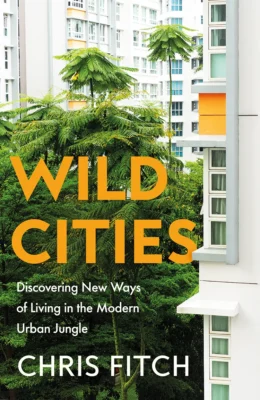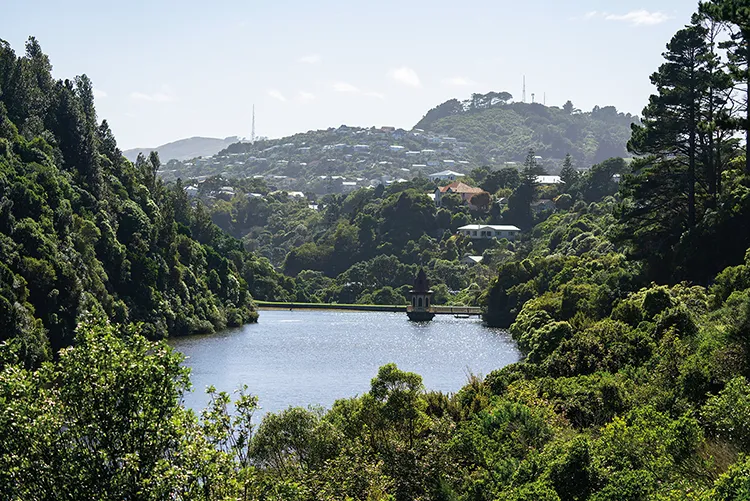
When James Lynch first trespassed into an overgrown Wellington valley in 1990, he discovered a forgotten reservoir. Three decades later, Zealandia is reshaping the city’s relationship with nature
On a hot, cloudless Saturday afternoon in late summer 1990, two figures in shorts and boots stepped off a residential street in suburban Wellington and into a wooded valley. Having been refused entry at the main gate by a caretaker, they’d found a rough track once used by loggers and construction workers. With a mild sense of trepidation, they disappeared into the forest. The heat was pressing, with very little breeze. But, as experienced walkers, they found the short trek relatively easygoing. The air was alive with the relentless alarms of cicadas, buzzing at full volume.
The landscape around them was full of thick gorse bushes and pine trees – remnants left over from the industrialisation of New Zealand’s forests a century earlier, when fast-growing pines were imported from California to reinvigorate the logging industry. But the western slopes of the valley were covered in native rewarewa and tawa, sun-loving broadleaf trees around 30 metres tall. Before long, the pair emerged from beneath the canopy and found themselves overlooking a large reservoir. It was full, waves gently lapping the sides. In the distance, at the far end of the valley, they saw houses – a reminder that they sat on the edge of Wellington city centre.
For James Lynch, a bespectacled management systems designer and cartoonist more commonly known as Jim, it was a thrilling experience. He turned to Chris Mathieson, his fellow trespasser. ‘Wow, where has this been?’
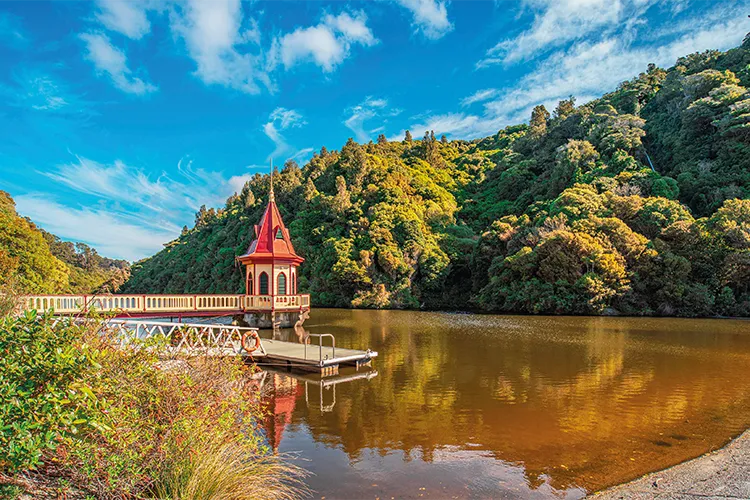
Jim and Chris had been surveying the city on behalf of Forest & Bird, a nationwide conservation organisation, on the lookout for sites of natural importance. This particular valley was once full of native birds. In 1839, a year before the signing of the Treaty of Waitangi between the British Crown and more than 500 Māori chiefs, the first European settlement on the southern end of the North Island was constructed in the nearby harbour, eventually becoming the city of Wellington. With the arrival of Europeans, everything changed. The valley was heavily logged, the new arrivals stripping the surrounding landscape bare. Photos from the late 1800s and early 1900s show the reservoir surrounded by naked hills, with just a scattering of trees.
Over a century later, this spot, now renamed Karori, lodged itself in Jim’s mind as a unique place deserving special treatment. He had become obsessed with the abundance of life on New Zealand’s offshore islands, where invasive species had been steadily eradicated throughout the 20th century. He was a regular visitor to Kāpiti Island, 50 kilometres north of Wellington. His dream was to find somewhere they could build something similar on the mainland – what they were calling a ‘mainland island’ – a fenced, predator-free sanctuary replicating the natural havens of offshore islands. With its relative isolation and lush vegetation, Karori was an appealing candidate. But as a working reservoir, it wasn’t seen as a realistic prospect. Jim set the idea aside.
Two years later, word spread that the reservoir was to be decommissioned. The land was to be returned to Wellington City Council, which was looking for a new purpose for it. Suddenly, Jim’s dream location was back on the table. Proposals began flying in to the council. One suggestion was to turn it into a caravan site; another proposed a mountain biking park. Jim was determined to see his idea for a nature reserve win out.

He and his colleagues from the Wellington branch of Forest & Bird poured their energy into a detailed proposal entitled Natural Wellington. It talked of restoring native vegetation to the city to attract birds such as the kererū, the native white-bellied wood pigeon. Jim, as an illustrator, brought the document to life with charismatic sketches of the wildlife they hoped to return. They took the vision public – speaking to clubs and communities across the city, handing out copies of the proposal. The response was overwhelmingly positive. Jim gained the support of planners, councillors, even the mayor. The unlikely idea of turning the former reservoir into a wildlife sanctuary got the green light in July 1995.
Five years of preparation followed, including the construction of an 8.6-kilometre predator-proof fence and an intensive eradication programme. At the turn of the millennium, the sanctuary opened to the public.
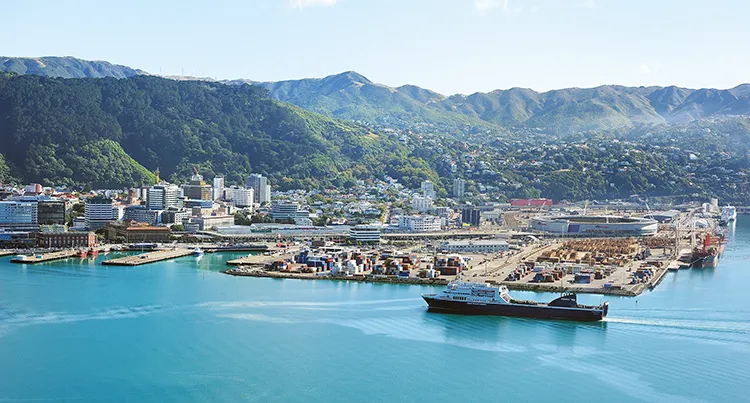
A REAL HABITAT
Jim Lynch doesn’t look much like your typical celebrity. With his neatly trimmed white beard beneath rimless glasses, firm walking boots and hiking pole, he could easily blend in to a crowd of nature revellers taking a leisurely wander through the sanctuary. But in the right company, he’s a rock star. Certainly, he took it in his stride when our conversation – while strolling up towards the upper reservoir – was interrupted by a fan. A woman wearing enormous sunglasses grabbed his hand and shook it enthusiastically, praising him until she was out of breath. He nodded patiently, accepting the accolades before gently easing her on her way down the path.
Such recognition feels warranted. Since Jim first trespassed into the valley three decades ago, it has been transformed. The final outcome is a long, 2.25-square-kilometre enclosure, around two-thirds the size of Manhattan’s Central Park. Narrow at the northeastern end, it widens as you walk southwest, past a small lake. Halfway up sits the old reservoir – now a dramatic viewpoint, just as it was in 1990. Beyond lie hundreds of hectares of wild bush, where rangers encourage the regrowth of native forest and the return of native birds.
Zealandia, as the sanctuary was named, is the beginning of a 500-year plan to become a safe haven for the country’s birdlife. It now provides vital habitat for kererū and a menagerie of other vulnerable native birds: tīeke – small black birds with a crimson wattle and copper saddle; tūī – iridescent blue-green with a clicking, whistling, R2D2-like call; bellbirds – korimako – described by Captain Cook as a ‘wild melody’; fantails – the twitchy pīwakawaka; and takahē – an endangered flightless species once thought extinct, rediscovered in the 1940s and now slowly rebounding.
On a sun-drenched spring afternoon, Jim pointed out the pine trees still visible on the slopes above – reminders of the valley’s industrial past. Zealandia occasionally closes to allow the removal of these trees, and he hopes to see them replaced entirely by native forest – what he calls ‘real habitat’.
Crossing boardwalks over the lower lake, Jim reflected on the success of attracting such a variety of birdlife to an urban sanctuary. Leaning on the railing, he looked out across the water. ‘It’s a gradient. If you take, say, the 30 or 35 New Zealand species of forest bird, there are about 12 or 15 that can survive happily in degraded ecosystems, even back gardens.’
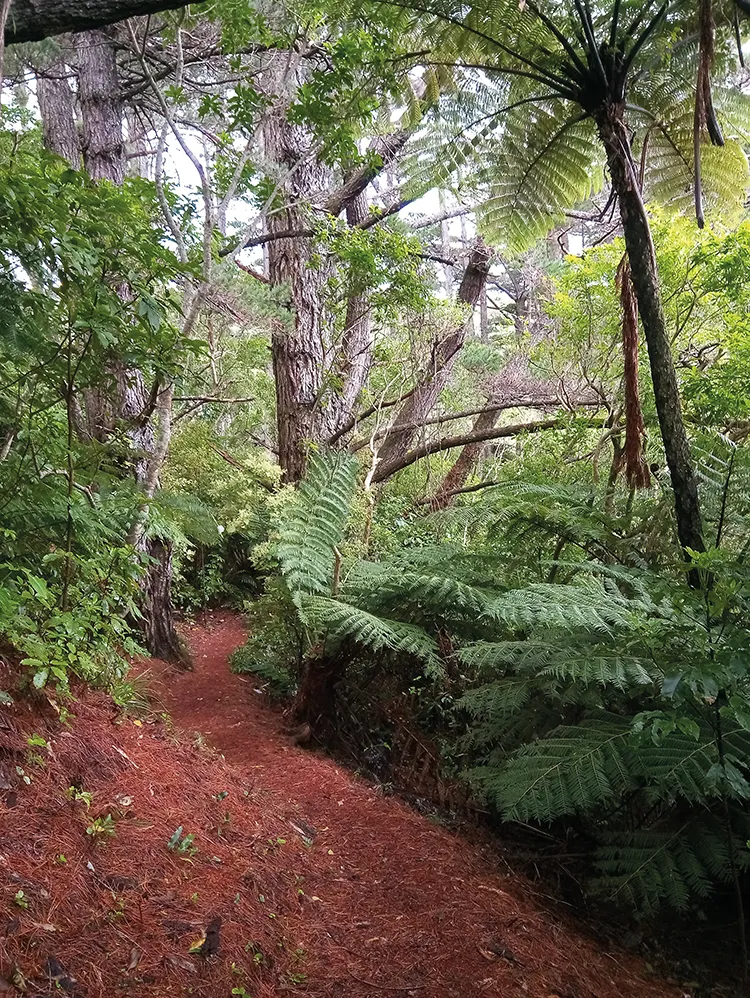
He turned to me. ‘Another group needs proper habitat, like tūī and pigeons. They can roam around gardens, but need good spaces to nest in. And there’s a third group that has to have high-quality habitat with no predators at all. So it’s a gradient.’
‘It comes down to ambition, perhaps,’ I said. ‘How much are you willing to change the city to favour wildlife?’
He nodded. ‘Wellington’s been quite prepared to change. Setting aside land for Zealandia was a remarkable thing – Wellington is short on land. It’s constrained by hills and land prices are through the roof. So, essentially, the city sacrificed hundreds of hectares. A big sacrifice.’
‘You must have made a persuasive argument,’ I said.
A smile. ‘Well, yeah. But I was lucky – it was never framed as a sacrifice.’
Heavy flapping interrupted us – a large kererū passed overhead, whooping softly, crashing into a branch on the far side of the lake. I like kererū – I read they gorge on fermented fruit, get drunk and fall out of trees. It’s no surprise they need protection from predators.
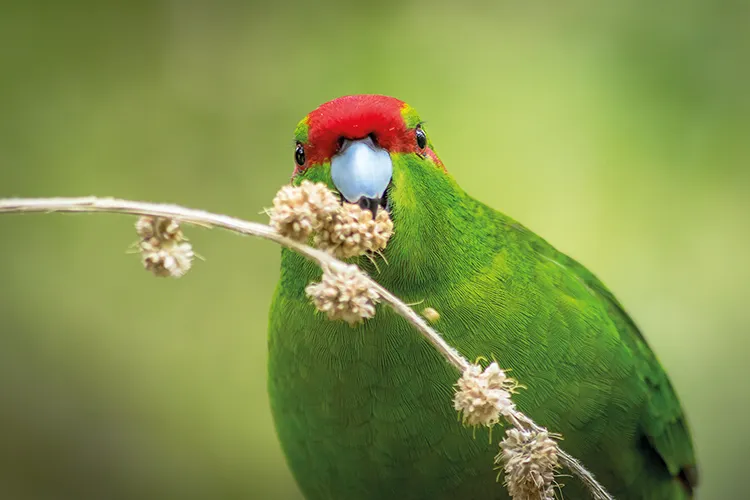
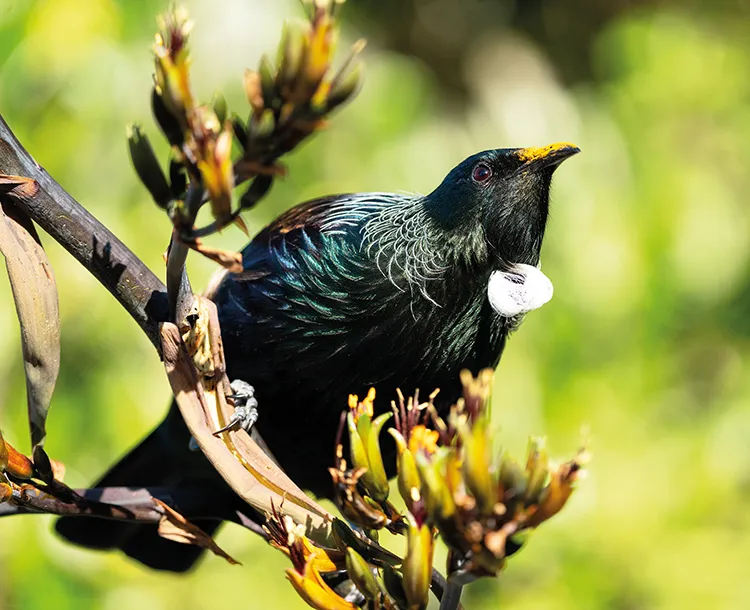
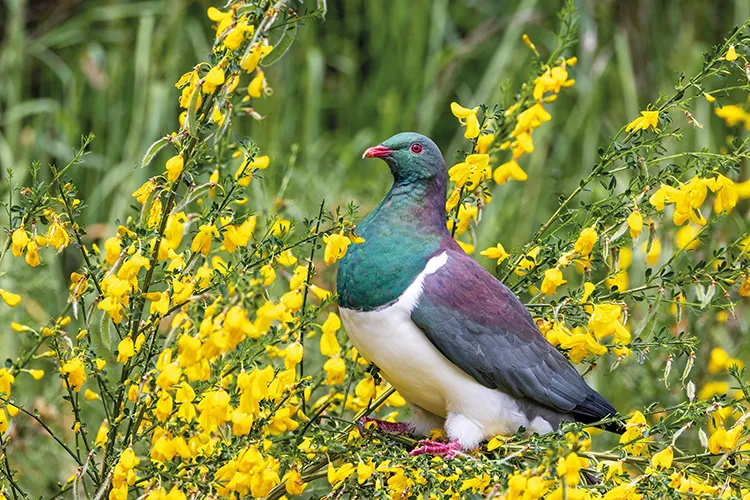
THE HALO EFFECT
And the birds don’t stay within the fences.
It’s called the ‘halo effect’. As the angelic terminology suggests, the phenomenon works by creating a safe haven – Zealandia – at the centre of a growing ecological ring. Birds are free to spread outwards into neighbouring communities. So long as they have Zealandia as a predator-free base in which to nest and raise their young, they can explore further afield, populating towns and suburbs well beyond the original site.
The effect on bird populations across Wellington has been profound. Each September, as the city emerges from winter, Wellington’s Urban Ecology Unit conducts five-minute bird counts at 100 different stations. Year on year, their surveys show rising numbers for nearly all species. Even typically shy or sedentary birds such as the round, green titipounamu – New Zealand’s smallest bird – have recently been observed outside the sanctuary’s boundaries.
In late summer 2003, Jim and his wife Eve were walking near the upper lake formed by the old dam when they spotted a nest. Inside were four young tīeke chicks. For most of the 20th century, tīeke had teetered on the edge of extinction, with only a few hundred scattered birds surviving in remote islands. Seeing this family, feeding and thriving just minutes from central Wellington, was something Jim had never expected. The couple sat and watched in awe as the adult tīeke flew off and returned again and again to feed their chicks. This is really going to work, Jim thought. Nature is going to cooperate. And, remarkably, all within a rugby ball punt of downtown Wellington.
